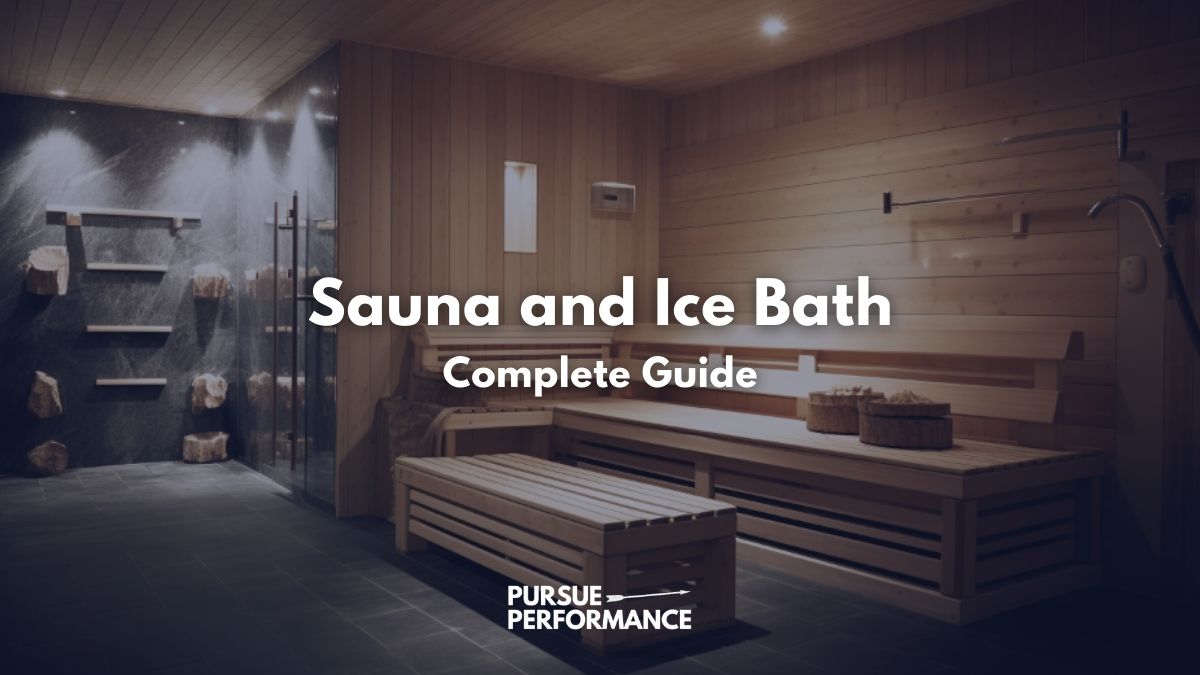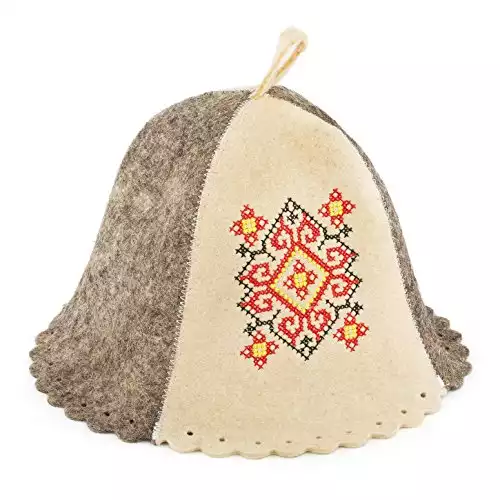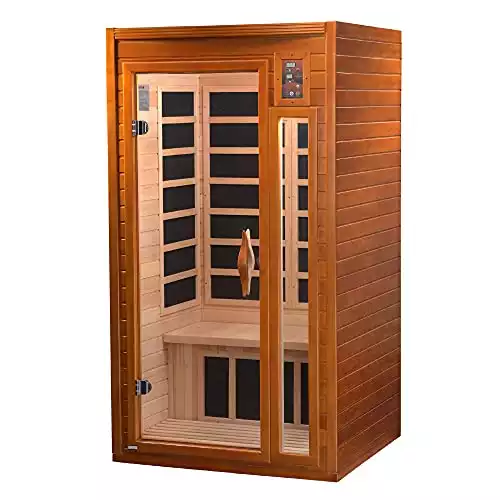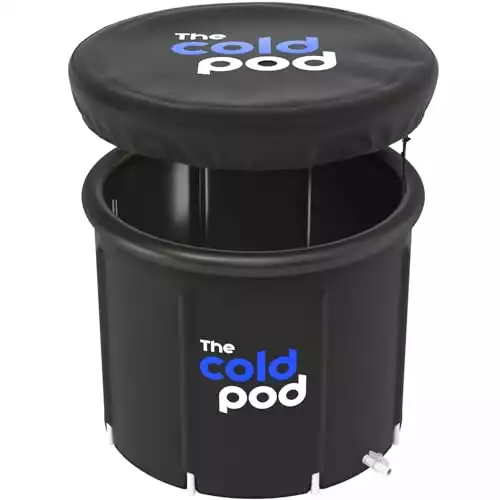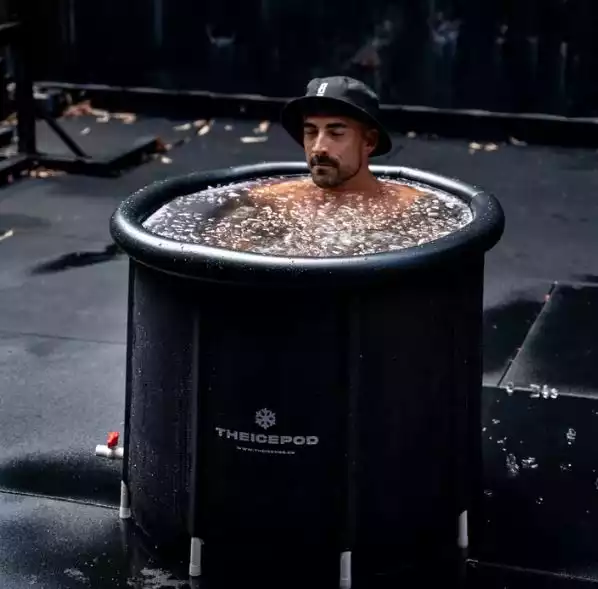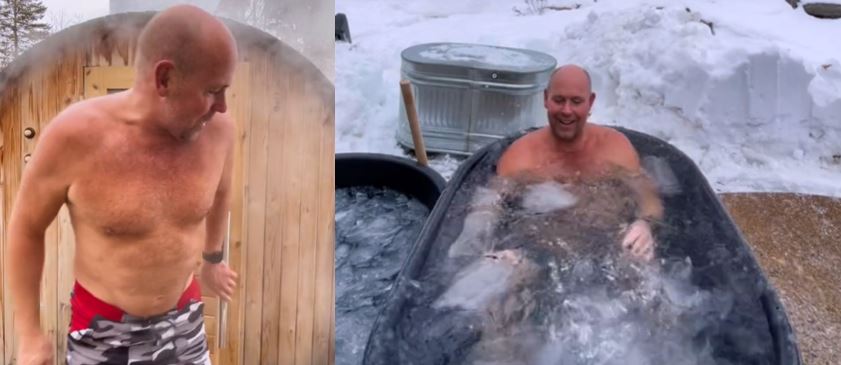You have probably seen the
This combination of hot and cold therapy has become a cornerstone of health and recovery regimens for athletes, biohackers, and health enthusiasts alike.
In this post, we will dive into the science-backed benefits of both protocols, explore their synergistic effects, and provide guidance on their correct application.
Let’s jump into it!
Top Picks
Best infraredsauna : BOTARO Maxxus
Best portable cold plunge: Cold Plunge XL
Bestsauna hat: Eden WoolSauna Hat
Sauna and Ice Bath: Unpacking the Benefits
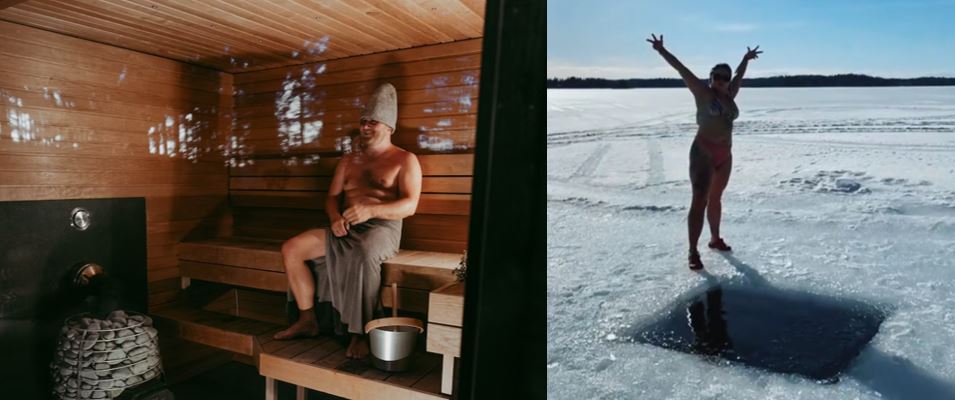
The art of combining
From the traditional Finnish
To truly understand the potential advantages, it’s crucial to break down the unique benefits of each therapy individually.
Related: Sauna Cold Plunge Routine
Sauna Benefits
When you step into a
- Detoxification: The intense heat of the
sauna stimulates profuse sweating. This isn’t your typical workout sweat; it’s a deep, detoxifying perspiration that aids the body in eliminating toxins, contributing to better overall health. - Cardiovascular Health: Regular
sauna use has been associated with improved heart function and blood circulation. A notable 20-year Finnish study published in JAMA Internal Medicine found that men who took frequent saunas (4-7 times a week) had significantly reduced risks of heart-related deaths compared to those who used saunas once a week. - Relaxation and Stress Relief: The gentle, enveloping heat from the
sauna doesn’t just make you feel good; it promotes relaxation, reduces stress, and enhances mood. Dr. Rhonda Patrick, a prominent health researcher, often shares her personal experiences withsauna use and its impact on stress and relaxation. - Improved Sleep: Regular
sauna use has been found to impact sleep patterns positively. Manysauna users report improved sleep quality, with some claiming it aids in combating insomnia. - Muscle Recovery: Saunas are a popular post-workout routine for many athletes. They increase blood circulation to tired and strained muscles, which accelerates the body’s natural healing process and promotes faster recovery.
Related: What to Wear in Sauna
Ice Bath Benefits
Ice baths, also known as cold plunge therapy, have garnered attention for their stark contrast to the comforting warmth of saunas.
These chilly dips subject your body to cold temperatures, which, much like the
- Reduced Inflammation and Muscle Soreness: Ice baths are a go-to for many athletes post-workout. They’re known to reduce inflammation and muscle soreness, a benefit supported by a review in The Cochrane Database of Systematic Reviews.
- Improved Circulation: When you plunge into cold water, your body instinctively redirects blood flow from your extremities to your vital organs. This vasoconstriction, followed by vasodilation as you warm up, improves overall circulation.
- Mental Resilience: Regularly submerging yourself in a cold bath isn’t just a physical challenge; it’s a mental one. Over time, this practice can enhance mental strength and resilience, as suggested by a study published in Medical Hypotheses.
- Boosted Immunity: Cold exposure stimulates the immune system, potentially reducing susceptibility to illness. The famous “Iceman” Wim Hof, known for his method combining breathwork, cold exposure, and commitment, has demonstrated exceptional immune responses in scientific studies.
- Enhanced Mood: Cold exposure triggers a rush of mood-enhancing hormones. A finding in the same Medical Hypotheses study suggested that cold showers might be a potential treatment for depression, thanks to the mood-boosting effects of endorphins released during the experience.
Related: Brain Fog Test: Symptoms, Diagnosis, and Treatment
- 20% larger vs. average
- Multi-layer insulation
- Thermal protective cover
- Small, portable & foldable
- Affordable
- Insulated
By combining
These environmental stressors, both individually beneficial, potentially work synergistically to enhance the mentioned benefits further.
Related: Andrew Huberman Sauna: Complete Guide
Comparing Sauna and Ice Bath Benefits
| Benefit | Sauna | Ice Bath |
|---|---|---|
| Detoxification | ✓ | |
| Cardiovascular Health | ✓ | ✓ |
| Relaxation and Stress Relief | ✓ | ✓ |
| Improved Sleep | ✓ | |
| Muscle Recovery | ✓ | ✓ |
| Reduced Inflammation | ✓ | |
| Improved Circulation | ✓ | ✓ |
| Mental Resilience | ✓ | |
| Boosted Immunity | ✓ | |
| Enhanced Mood | ✓ | ✓ |
By combining
Related: Sauna Stretches To Boost Flexibility And Recovery
Recommended Protocol for Sauna and Ice Bath
While these practices offer numerous health benefits, they are also a form of stress on the body.
So, it’s essential to follow a well-planned protocol to ensure safety and effectiveness.
Everyone’s tolerance to heat and cold varies, so what works for one person may not work for another.
Always listen to your body and, if possible, have someone close by who can help if anything goes wrong.
Related: Cold Plunge and Ice Bath Statistics
Sauna Protocol
Type of
Infrared saunas use light to create heat and are usually well-tolerated as they operate at a lower temperature.
Traditional saunas heat the air, which then heats your body, creating a hotter, more intense experience.
Related: Joe Rogan Sauna: Type, Routine, and Benefits
Temperature: Typically, traditional saunas are set between 80-100°C (176-212°F), while infrared saunas usually operate between 50-60°C (120-140°F).
The heat from the
Related: Why Don’t I Sweat in the Sauna?
Duration: Start with 5-10 minutes per session, gradually increasing to 15-30 minutes as your body adjusts to the heat.
Frequency: Begin with 1-2 sessions per week, and as you grow more comfortable, you can increase this to 3-4 times per week.
Related: Sauna vs. Hot Tub
Ice Bath Protocol
Type of Cold Therapy: You have several options for cold therapy, including cold plunges, ice baths, and cold showers.
Cold plunges and ice baths are more intense, with the temperature usually below 15°C (59°F).
Related: Inflatable Cold Plunge: Complete Buying Guide
Cold showers are milder and a good starting point for those new to cold therapy.
Although some people find ice showers to be less tolerable than cold plunges due to the inconsistent, cold exposure to the skin at various parts of the body.
Temperature: Cold showers are typically around 20°C (68°F), while cold plunges and ice baths can be between 10-15°C (50-59°F).
Duration: Start with 30-60 seconds, gradually working your way up to 5-10 minutes as your tolerance builds.
Frequency: Start with 1-2 times per week, gradually increasing as your body adapts to the cold.
Combined Sauna and Ice Bath Protocol
Combining
Here’s a suggested protocol:
- Start with a 15-20 minute
sauna session. Stay well-hydrated and leave thesauna if you feel dizzy or uncomfortable. - After the
sauna , cool down for a few minutes at room temperature. - Immerse in the ice bath for 2-5 minutes.
- Rest and allow your body to return to its normal temperature. You can repeat the hot-cold cycle if desired.
Remember, this protocol is just one suggestion.
Adjust the durations and temperatures to fit your personal tolerance and preference, always prioritizing safety and comfort.
Related: Oxygen Deprivation Training: Benefits, Risks, and Recommendations
FAQs
Is going from sauna to ice bath good?
Transitioning directly from a
Is cold plunge after sauna good for you?
Yes, the cold plunge after a
What’s better for muscle recovery, ice bath or sauna ?
Both have benefits for muscle recovery. Saunas improve circulation and aid in toxin removal, while ice baths reduce inflammation and muscle soreness. Combining the two provides optimal muscle recovery.
Should you ice bath or hot tub first?
Traditionally, heat exposure is done first (sauna or hot tub), followed by a cold plunge.
This order helps to maximize the circulatory and detoxification benefits of both therapies.
How long should you do the sauna cold plunge?
The duration of both
Typically, 15-30 minutes in the
Do ice baths tighten muscles?
While ice baths can cause muscles to contract temporarily due to the cold, they do not permanently tighten muscles.
In fact, they often help relieve muscle tension and soreness.
What to do immediately after cold plunge?
After a cold plunge, it’s generally recommended to warm up gradually, either passively by wrapping in a towel or robe or actively by performing light movement or exercise.
Why do I feel dizzy after sauna and cold plunge?
Dizziness can occur due to rapid changes in body temperature and blood pressure.
If you experience dizziness, slowly transition between the
Why does my body feel hot after ice bath?
This sensation is due to your body’s thermoregulatory response, working to reheat your body to its normal temperature quickly.
How long should you wait to shower after an ice bath?
You can shower immediately after an ice bath.
Some prefer a warm shower to gradually increase their body temperature, while others opt for a cold shower to prolong the effects of the cold plunge.
What happens if you take a hot shower right after an ice bath?
It’s generally recommended to let your body naturally warm up after an ice bath.
If possible, air drying is preferable to drying off with a towel.
Taking a hot shower right after an ice bath will quickly raise your body temperature and potentially reduce the beneficial effects of cold exposure.

